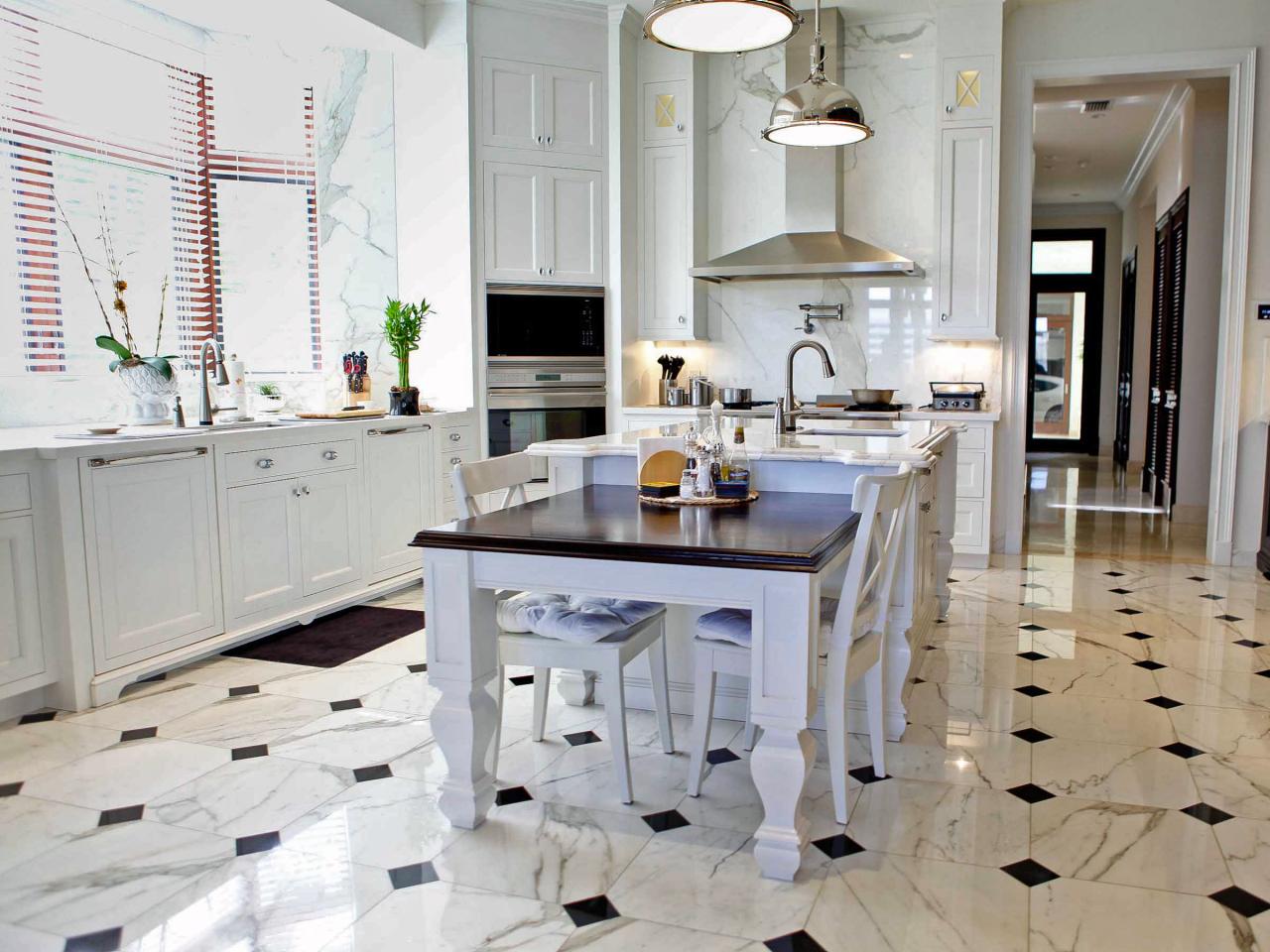Kitchen marble countertops are regarded by interior designers as the pinnacle of elegance and luxury. The material remains one of the leading options for kitchen countertops, despite a few practical limitations.
The advantage of marble is that it comes in a much more comprehensive range of shades than most people believe. White is the most common color, ranging from pure white to very pale pink or blue. However, you can also find green, reddish pink, salmon pink, blue-gray, blue-black, and black marble. This makes it an excellent choice for many rooms in the house to complement all types of décor.
Additionally, marble has different grains and veins, which makes it unique to each type. Most people don’t realize this. These subtle differences have a substantial impact on a room’s overall style and appearance. The type of marble you choose for your kitchen counters will determine the kind of kitchen you have.

Carrara:
As the name suggests, it comes mainly from Carrara in Italy, although some marble slabs may have come from Tuscany.
Most people think that Carrara marble is always white, but it is also available in blue-gray or gray. Carrera white marbles are ideal for kitchens and bathrooms. It has linear grain patterns that are soft or fine, and some tiles may have subtle drama about them. Most people prefer white Carrara marble for its pristine appearance.
Statuary:
Less known but just as spectacular as its famous cousin, Carrara marble, statuario Classico marble also comes from the Carrara region. It is also a white marble but with a semi-transparent appearance that highlights the light gray veins.
Calacatta:
Another famous primarily white marble, calacatta marble, is quite rare and, as a result, quite expensive. However, many people confuse it with the more readily available Carrara, so it seems familiar.
Calacatta marble also comes from Italy, mainly in the Carrera region, and is often white with gray veins. The distinct veins and color variations make it much more spectacular than ordinary white marbles. When there are streaks or gold veins, it only increases the richness of the stone. Depending on how you combine it with other colors, it can make for a cool or warm look. This versatility is why luxury-conscious designers and owners want it.
Nero Marquina marble:
If you are skeptical that natural marble is black, it would be understandable. Marble is a metamorphosed rock and derives from limestone, which is primarily white. However, natural black marble does exist, and this is Nero Marquina or Marmol negro marble crema Marfil marble.
How to choose a sheet?
Once you’ve decided on the type and shade of marble you want to show the rest of your construction, several factors need to be considered when choosing a particular slab. This is where working with an experienced supplier can come in very handy, as the selection of tiles can vary depending on the size and shape of the Kitchen marble countertops or backsplash.
If the space is large enough to require a look between two plates, it might be a good idea to use a matching piece to continue the stripes in a consistent left-to-right mirror pattern. Bookmatching is done by cutting a plate in half lengthwise and separating the two halves as if opening the pages of a book.
Another factor to consider is the direction in which you want the marble to be cut: vein cut or cross-cut:
Vein cutting:
This means that the marble has been cut along the veins of the streaks to show them in full width over the entire surface of the marble.
Cross-section:
It means that the marble has been cut perpendicular to the veins so that you can see some spots of the central section of the parsnip as if looking at the end of a cut log.
How to clean kitchen marble countertops?
Tools:
- the water
- dish soap
- microfiber cloths
- sodium bicarbonate
- Hydrogen peroxide
- Plastic casing
- To record
Cleaning:
Retinas like to use a mixture of warm water and mild dish soap for daily cleaning, followed by a microfiber towel to make the stone shine. Avoid abrasive or acidic cleaners, which can tear the sealant and etch the stone.
Stain removal:
For stains on granite or marble countertop dealers, clean with a paste of baking soda and water (for oil-based paints) or hydrogen peroxide (for water-based stains). Apply the paste to the stain, cover with cling film, and secure the edges.
Let it sit for a few days (or at least overnight), then rinse off the paste. Repeat the process if the stain has not entirely disappeared.
Sealing:
These surfaces are valued for their durability but must be sealed regularly to protect them from stains.
Conclusion:
Kitchen marble countertops are a great idea if you want to enhance your kitchen or bathroom look with elegance. The wide variety of colors and grain patterns makes it versatile, and these relatively common options make it quite affordable. If you want to know what options are already available to you, visit the showroom of a reputable natural stone countertop supplier in your area.
